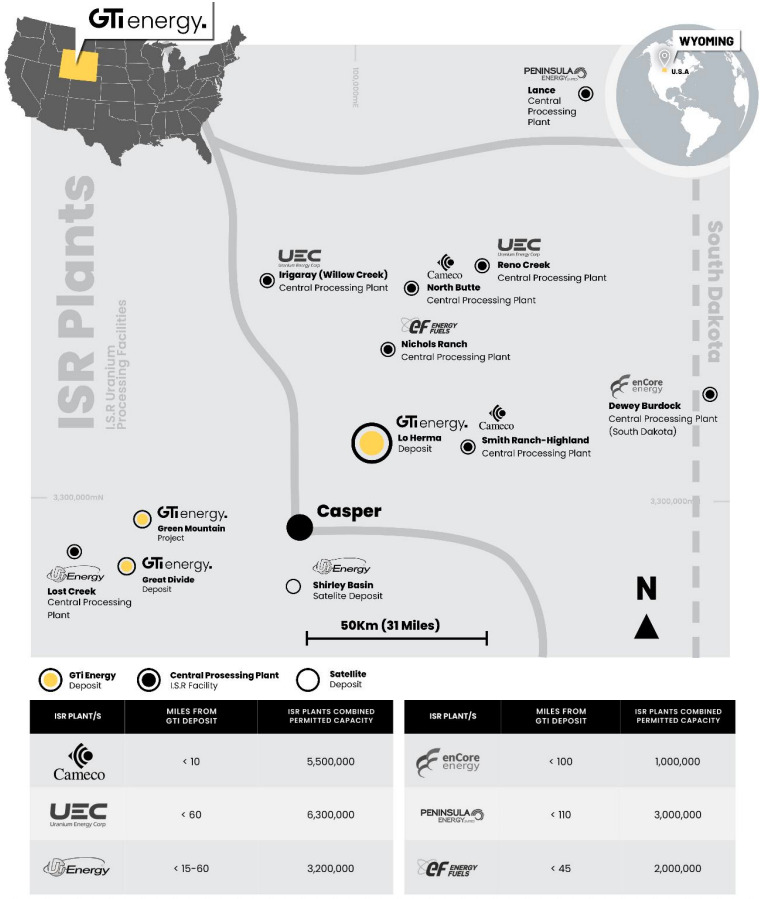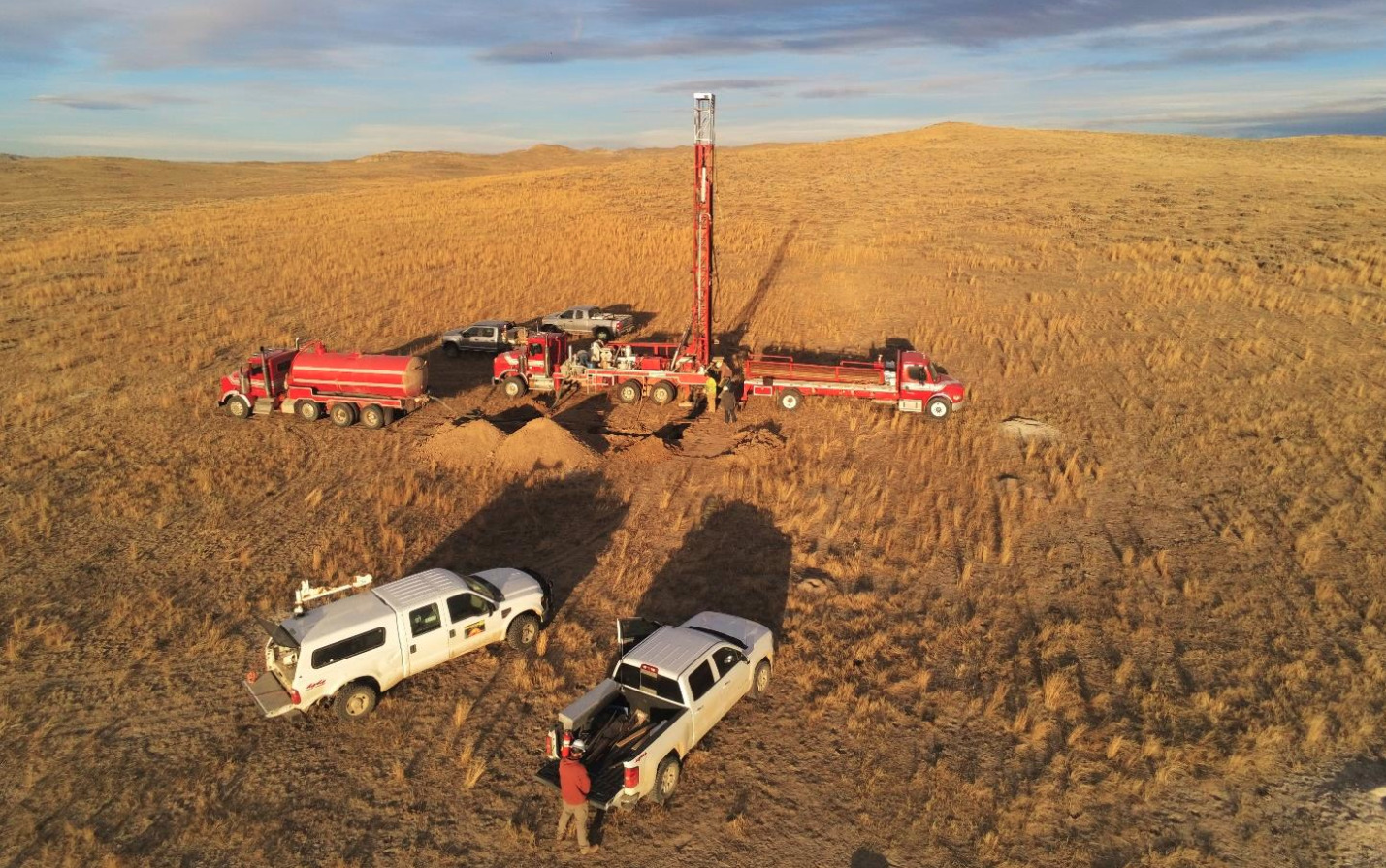The drill bit is spinning at GTI’s Lo Herma, within a whisker of the US’ largest ISR uranium production plant
Mining
Mining
Special Report: GTI Energy has started drilling its Lo Herma ISR uranium project in Wyoming’s Powder River Basin to validate and upgrade the inferred 5.7Mlb resource grading 630ppm whilst testing its potential to expand.
GTI Energy’s (ASX:GTR) Lo Herma is in a uranium hotspot, ~10 miles from the US’s largest ISR U3O8 production plant at Cameco’s Smith Ranch-Hyland, and ~60 miles from UEC’s Irigaray & Energy Fuels’ Reno Creek.
The Powder River Basin, the backbone of Wyoming uranium production since the 1970s, has extensive in-situ recovery (ISR) uranium production history with numerous defined ISR uranium resources, central processing plants (CPP) and satellite deposits.
Unlike conventional mining, ISR doesn’t require digging the ore out of in the ground. Minerals are recovered by dissolving them and pumping the pregnant solution to the surface, which means little surface disturbance and no tailings or waste rock generated.

GTR’s exploration target for the project was updated in July with an additional 5.87-10.26Mlb potential at an average grade of 500–700ppm, which illustrates the potential for Lo Herma to become a producing deposit.
The explorer has now kicked off a 26-hole for 4,600m mud rotary drilling program, targeting exploration potential along trend in the Wasatch Formation and in the deeper Fort Union Formation, which Cameco produces from ~10 miles west.

There appears to be “material potential” to increase the resource along trend but also possibly at depth within the highly productive Fort Union formation, as highlighted by the exploration target.
Several of the drill holes are targeting the confirmation of historical drilling data.
If conditions allow, the drillers will attempt to recover rock core samples of the mineralised zone for metallurgical testing.
Drill holes have also been planned to test the alteration conditions of the host sand units across the property and geological strata.
This will help in further refining the locations of the projected REDOX trends and in improving targets for future exploration.
These stratigraphic holes will also bring the benefit of testing the deeper sand units of the Fort Union formation which were historically underexplored.
The program is part of a larger permitted campaign totalling 68 holes with the balance to be refined and assessed for execution during 2024.
This article was developed in collaboration with GTI Energy, a Stockhead advertiser at the time of publishing.
This article does not constitute financial product advice. You should consider obtaining independent advice before making any financial decisions.